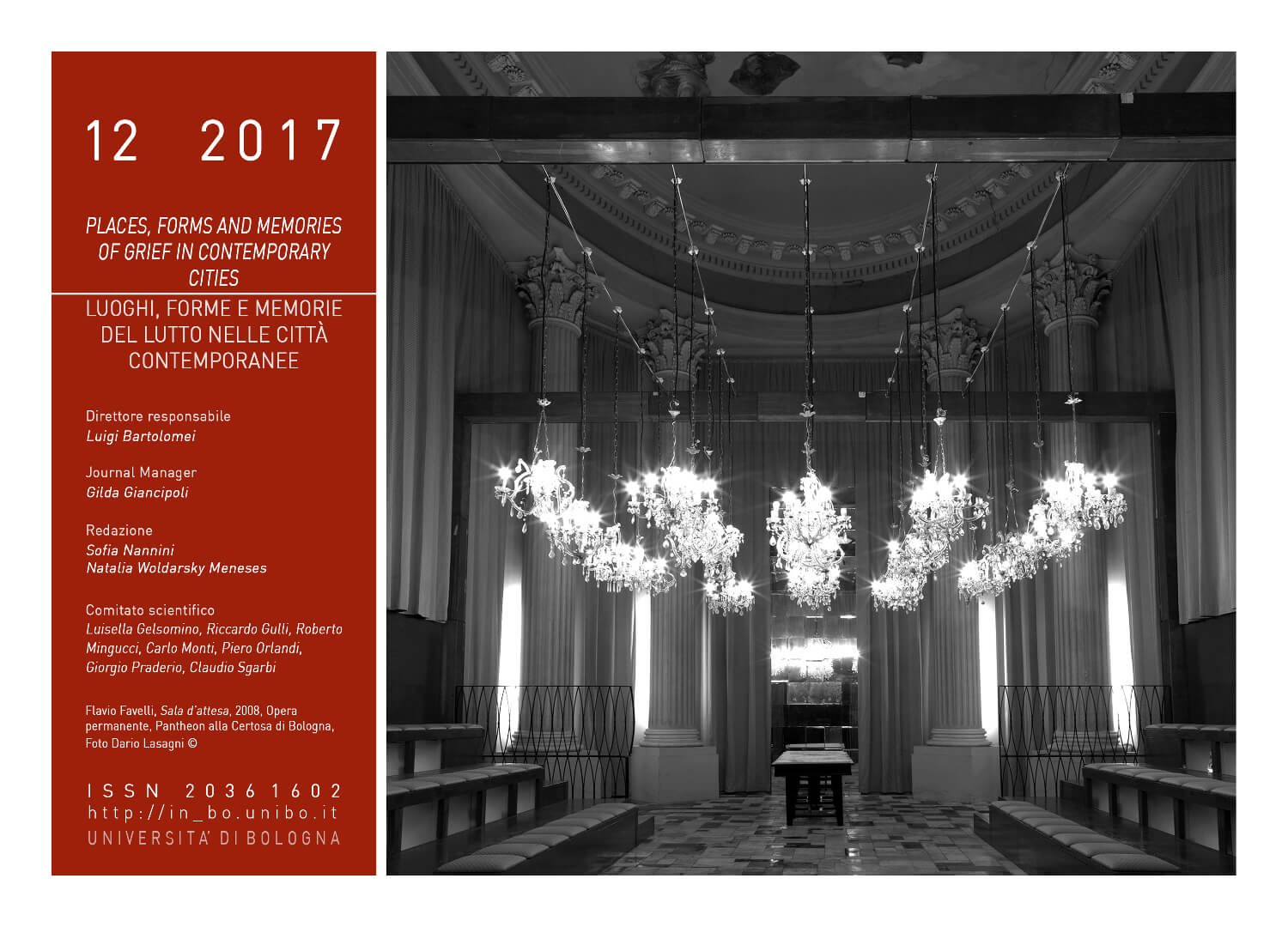Give Place to Grief: the Construction of Memory to the Ustica Massacre
DOI:
https://doi.org/10.6092/issn.2036-1602/7872Keywords:
Ustica massacre, Museum, Art, Relics, Place of memory (lieu de mémoire)Abstract
On 27th June 1980, Itavia Airlines flight India Hotel 870 took off from Bologna bound for Palermo with 81 passengers and crew aboard. An hour into the flight, around 9 p.m., it disappeared from the radar screens. A few hours later, wreckage from the DC-9 was spotted in the Tyrhennian Sea off the island of Ustica, near Sicily. There were no survivors. The cause of the tragedy remains one of Italy’s most enduring mysteries. On 27th June 2006, a convoy of trucks carrying the airplane’s fragments made a journey back to Bologna. Here the plane was reassembled once again. And around the relics, the French artist Christian Boltanski, whose work is always involved with memory and loss, created an emotional installation, with 81 pulsing lamps hanging over the plane, 81 black mirrors with 81 loudspeakers behind them, diffusing a subdued murmur of simple thoughts/worries of everyday life for people going on holiday. The Museum for the Memory of Ustica created a “place of memory” for a massacre without a place: the plane disappeared from the sky and sunk in a deep point of the Mediterranean Sea.Downloads
Published
2018-07-10
How to Cite
Pirazzoli, E. (2017). Give Place to Grief: the Construction of Memory to the Ustica Massacre. IN_BO. Ricerche E Progetti Per Il Territorio, La Città E l’architettura, 8(12), 22–37. https://doi.org/10.6092/issn.2036-1602/7872
Issue
Section
Invited Speakers
License
Copyright (c) 2018 Elena Pirazzoli
Copyrights and publishing rights of all the texts on this journal belong to the respective authors without restrictions.
This journal is licensed under a Creative Commons Attribution-NonCommercial 4.0 International License (full legal code).
See also our Open Access Policy.
Metadata
All the metadata of the published material is released in the public domain and may be used by anyone free of charge. This includes references.
Metadata — including references — may be re-used in any medium without prior permission for both not-for-profit and for-profit purposes. We kindly ask users to provide a link to the original metadata record.







